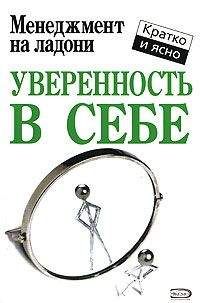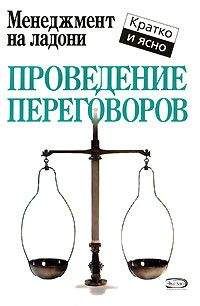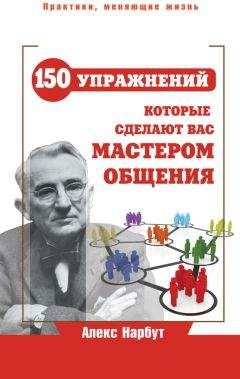Роберт Саттон - Охота за идеями. Как оторваться от конкурентов, нарушая все правила
124
Cummings, A., and G. R. Oldham, “Enhancing Creativity: Managing Work Contexts for the High Potential Employee,” California Management Review 40 (1997): 22–38.
125
Kirton M. J. Adaptors and Innovators (London: Routledge, 1989); Kirton M. J. Adaptors and Innovators: A Description and Measure // Journal of Applied Psychology 61 (1976): 622–29; and Keller R. T. Predictors of the Performance of Project Groups in R&D Organizations // Academy of Management Journal 29 (1986): 715–26.
126
Sutton R. I., K. M. Eisenhardt, and J. V. Jucker. Managing Organizational Decline: Lessons from Atari // Organizational Dynamics 14 (1986): 17–29.
127
Интервью провели Памела Эпштейн и Роберт Саттон 1 августа 1984 г. в Стэнфордском универитете.
128
Indrema presentation. Bay Area Linux Users Group, San Francisco, September 19, 2000.
129
Coyne. 3M. 43–63.
130
Паккард Д. Путь HP. Как Билл Хьюлетт и я создавали нашу компанию. – М.: Аквамариновая книга, 2008.
131
Packard D. The HP Way: How Bill Hewlett and I Built Our Company (New York: HarperBusiness, 1995), 108.
132
Maas P. The Terrible Hours: The Man Behind the Greatest Submarine Rescue in History (New York: HarperCollins, 1999).
133
Там же, с. 65.
134
Maas P. The Terrible Hours: The Man Behind the Greatest Submarine Rescue in History (New York: HarperCollins, 1999), 106.
135
Coyne. 3M, 50.
136
Leiber R. Feat of Clay // Fast Company (April 2000): 230–44.
137
Leiber R. Feat of Clay // Fast Company (April 2000), 244.
138
Один из мировых лидеров в производстве высокотехнологичного стекла, керамики и изделий из них для промышленных и бытовых нужд; практически бессменный лидер инноваций в своей области. – Прим. ред.
139
Fishman C. Creative Tension // Fast Company (November 2000), 372.
140
Там же.
141
O’Mahony S., unpublished interview with an anonymous San Francisco Bay Area Linux programmer, July 2000.
142
Seabrook J. Rocking in Shangri-la // The New Yorker, October 10, 1994, 66.
143
Там же, с. 68.
144
Reid R. Architects of the Web: 1,000 Days that Built the Future of Business (New York: Wiley, 1997), 121.
145
Там же, с. 122.
146
Hirshberg J. The Creative Priority (New York: HarperBusiness, 1998), 30.
147
Там же.
148
Lowery N., and D. W. Johnson. Effects of Controversy on Epistemic Curiosity, Achievement, and Attitudes // Journal of Social Psychology 115 (1981): 31–43.
149
Charlton J. The Executive Quotation Book (New York: St. Martin’s Press, 1983), 30.
150
Исследования по теме проведения мозговых штурмов и прочих методик генерирования идей см. Adams, J. L. The Care and Feeding of Ideas: A Guide to Encouraging Creativity (Reading, MA: Addison-Wesley, 1986); Osborn, A. F., Applied Imagination, 3d ed. (New York: Scribner’s, 1963); Sutton, R. I. and A. Hargadon. Brainstorming Groups in Context: Effectiveness in a Product Design Firm // Administrative Science Quarterly 41 (1996): 685–718; and Van de Ven A. H., A. L. Delbeq. The Effectiveness of Nominal, Delphi, and Interacting Group Decision-making Processes // Academy of Management Journal 17 (1974): 605–21.
151
В первый раз я услышал описание этого приема из уст Питера Скиллмана в апреле 1995 г., когда беседовал с ним. Он как раз работал в IDEO Product Development. Не так давно мы с ним обсуждали состояние дел с мозговыми штурмами в Handspring, и он сообщил, что по-прежнему применяет этот прием.
152
Jehn K. A. A Multi-method Examination of the Benefits and Detriments of Intragroup Conflicts // Administrative Science Quarterly 40 (1995): 271.
153
Eisenhardt K., J. L. Kahwajy and L. J. Bourgeois III. How Management Teams Can Have a Good Fight. Harvard Business Review (July-August 1997): 82.
154
Hiltzik M., Dealers of Lightning (New York: HarperBusiness, 1999).
155
Там же, с. 16–17.
156
Hiltzik M., Dealers of Lightning (New York: HarperBusiness, 1999), 145.
157
Там же, с. 147.
158
Там же, с. 17.
159
Kurtzberg, T. R., “Group Conflict and Creativity” (Ph.D. diss., Kellogg School of Management, Northwestern University, 2000).
160
См, например: Watson D., and L. A. Clark. Negative Affectivity: The Disposition to Experience Aversive Emotional States // Psychological Bulletin 96 (1984): 465–90; и Staw B. M., and J. Ross. Stability in the Midst of Change: A Dispositional Approach to Job Attitudes // Journal of Applied Psychology 70 (1985): 469–80.
161
Staw B. M., N. E. Bell and J. A. Clausen. The Dispositional Approach to Job Attitudes: A Lifetime Longitudinal Test // Administrative Science Quarterly 31 (1986): 56–77.
162
McGhee P. E., and J. H. Goldstein. Handbook of Humor Research: Basic Issues, Vol. 1 (New York: Springer Verlag, 1991); and McGhee P. E., and J. H. Goldstein. Handbook of Humor Research: Applied Studies, Vol. 2 (New York: Springer Verlag, 1991).
163
См. Sutton R. I., and A. L. Callahan. The Stigma of Bankruptcy: Spoiled Organizational Image and Its Management // Academy of Management Journal 30 (1987): 6.
164
Eisenhardt K., J. L. Kahwajy and L. J. Bourgeois II. How Management Teams Can Have a Good Fight // Harvard Business Review (July-August 1997): 77–85.
165
Там же, с. 81.
166
Zajonc R. B. Emotion and Facial Efference: An Ignored Theory Reclaimed. Science 228 (April 1985): 15–21; and Zajonc R. B., S. T. Murphy and M. Inglehart. Feeling and Facial Efference: Implications of the Vascular Theory of Emotion // Psychological Review 96 (1989): 395–416.
167
Anderson C. A. Temperature and Aggression: Ubiquitous Effects of Heat on the Occurrence of Human Violence // Psychological Bulletin 106 (1989): 74–96; Baron R. Human Aggression (New York: Plenum, 1977); and Griffitt W. Environmental Effects on Interpersonal Affective Behavior: Ambient-Effective Temperature and Attraction // Journal of Personality and Social Psychology 15 (1970): 240–44.
168
Isen, A. M., K. A. Daubman, and G. P. Nowicki, “Positive Affect Facilitates Creative Problem Solving,” Journal of Personality and Social Psychology 52 (1987): 1122–31; and Isen, A. M., M. M. Johnson, E. Mertz, and G. F. Robinson, “The Influence of Positive Affect on the Unusualness of Word Associations,” Journal of Personality and Social Psychology 48 (1985): 1413–26.
169
Isen, A. M., and R. A. Baron, “Positive Affect as a Factor in Organizational Behavior,” in Research in Organizational Behavior, vol. 13, ed. L. L. Cummings and B. M. Staw (Greenwich, CT: JAI Press, 1991): 21.
170
См. Seligman, M. E. P. Helplessness (San Francisco: Freeman, 1975); Abramson, L. Y., M. E. P. Seligman, and J. D. Teasdale, “Learned Helplessness in Humans: Critique and Reformulation,” Journal of Abnormal Psychology 87 (1987): 32–48; and Seligman, M. E. P., и P. Schulman, “Explanatory Style as a Predictor of Productivity and Quitting Among Life Insurance Sales Agents,” Journal of Personality and Social Psychology 50 (1986): 832–38.
171
См. Taylor S. E. Positive Illusions (New York: Basic Books, 1989); and Taylor S. E., and J. D. Brown. Illusion and Well-being: A Social Psychological Perspective on Mental Health // Psychological Bulletin 103 (1988): 193–210.
172
Isen A. M., and N. Geva. The Influence of Positive Affect on Acceptable Level of Risk: The Person with a Large Canoe Has a Large Worry // Organization Behavior and Human Decision Processes 39 (1987): 145–54; and Isen A. M., and R. Patrick, “The Influence of Positive Affect on Risk Taking: When the Chips Are Down,” Organization Behavior and Human Performance 31 (1983): 194–202.
173
Roberts, D. R., “The Influence of Emotional State on Decision-Making Under Risk” (Ph.D. diss., Palo Alto, CA: Graduate School of Business, Stanford University, 1993).
174
Hatfield, E., J. T. Cacioppo, and R. L. Rapson. Emotional Contagion (Cambridge, UK: Cambridge University Press, 1994); and M. J. Colligan, J. W. Pennebaker, and L. R. Murphy. Mass Psychogenic Illness: A Social Psychological Analysis (Hillsdale, NJ: Erlbaum, 1982).




